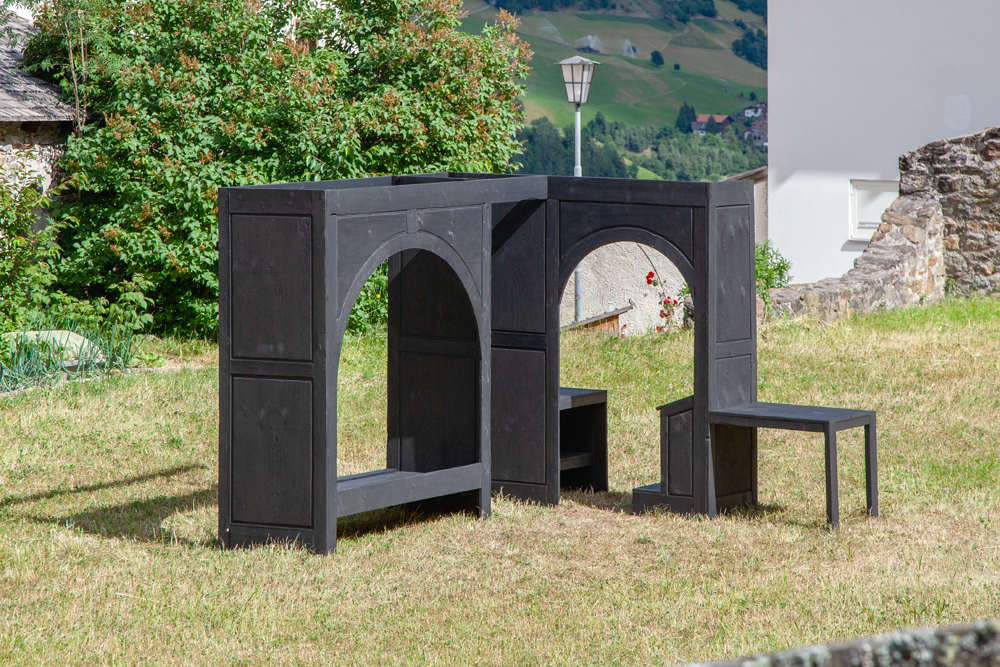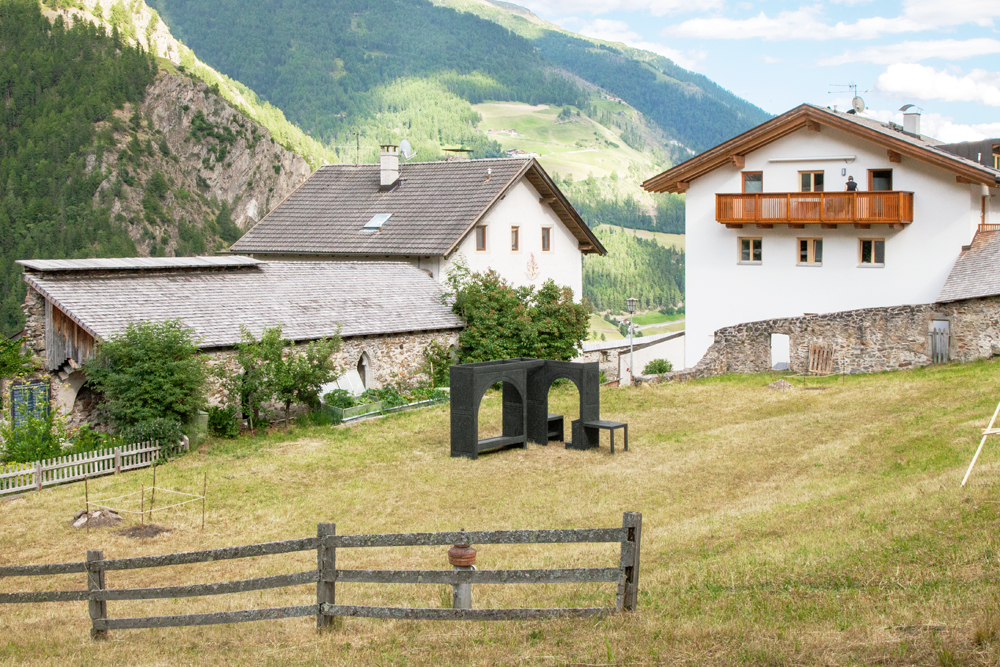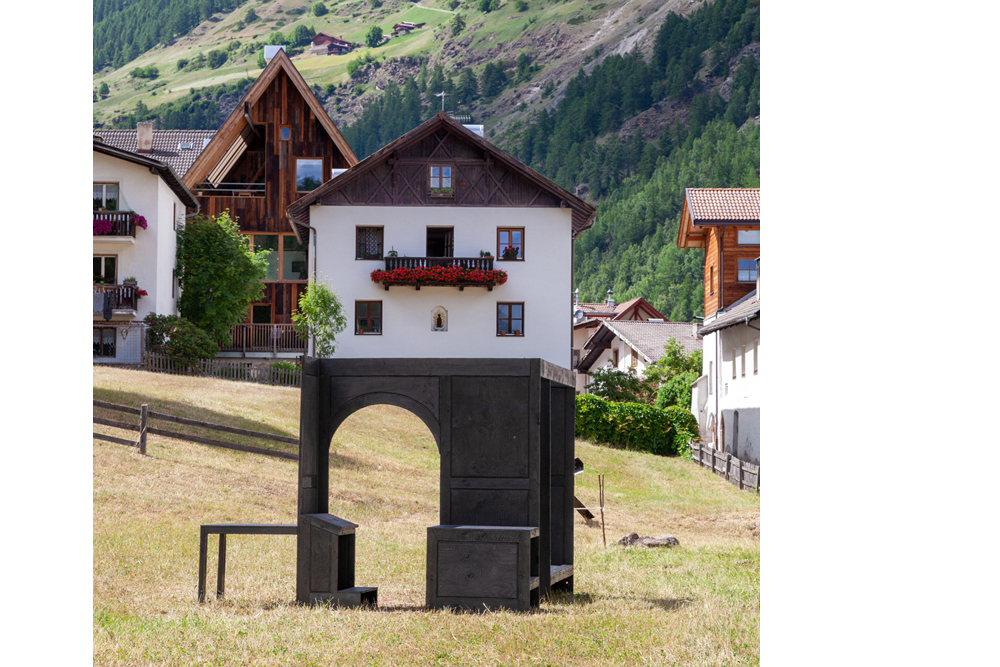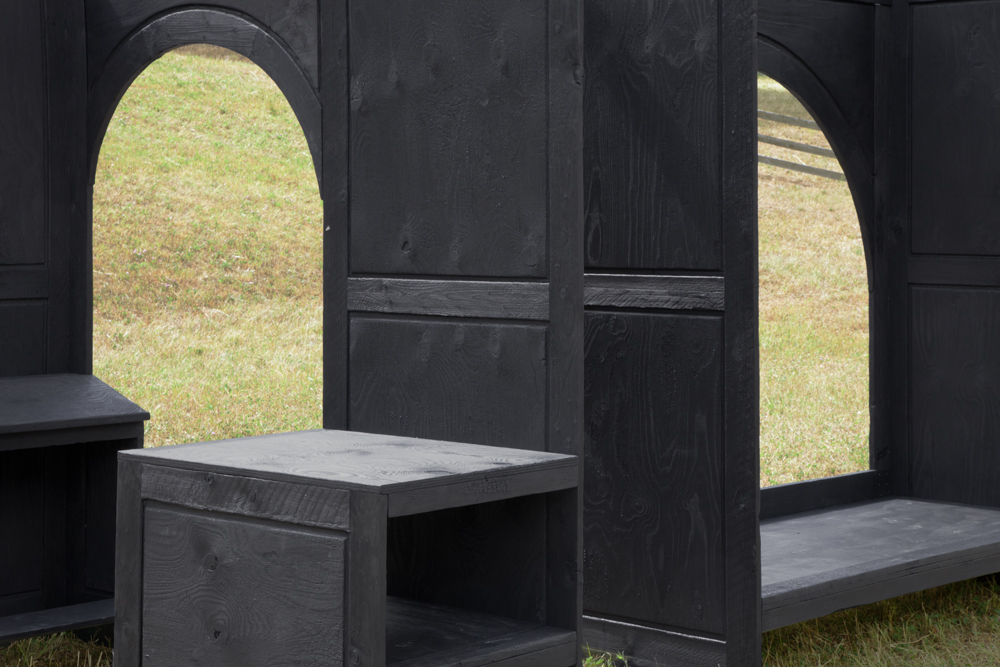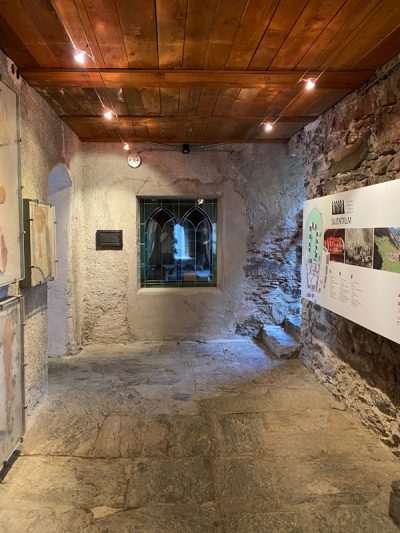Cubiculum, 2021
Wood, metal, carbonized
Approx. 220 x 330 x 290 cm
Bed, cabinet, bench, table, connected with theatrical arches: the spartan furnishings of a Carthusian cell as a freely accessible sculpture.
With this interior Stefan Alber turns the idea of the monastery cell upside down. He confronts the enclosed space and the hermit, isolated and strange to the environment as an implant, this ideal image of monastic architecture, with the history of the place Karthaus. The place owes its present character to a further implant: the village of Karthaus overgrew the foundation of the monastery walls after the dissolution of the Carthusian order. According to a local legend, a walled-in Carthusian monk regained his freedom only after the destruction of these walls by the fire catastrophe from 1924 which turned Karthaus into a ruin.
Stefan Alber’s set is also carbonized and black. But it doesn’t breathe the burning smell of the catastrophe, but rather the resilience of the cell open on all sides as a projection surface for the free views of life and the geometry of the monastic implant.
Text: Thomas and Michael Rainer
Foto: Exhibition view; Implantat (at) Karthaus, 10.07. – 22.08. 2021, Karthaus/Italy
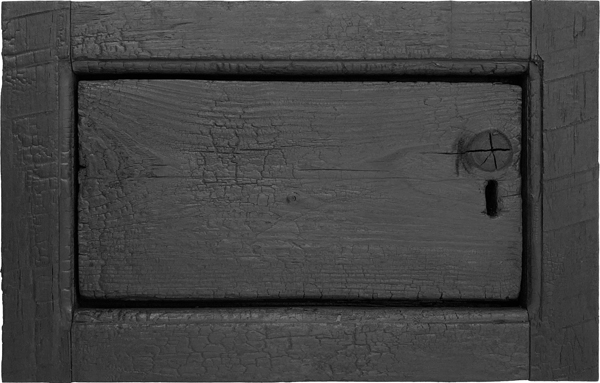
Durchreiche, 2021
Wood, metal, carbonized
21,7 x 34,0 cm
